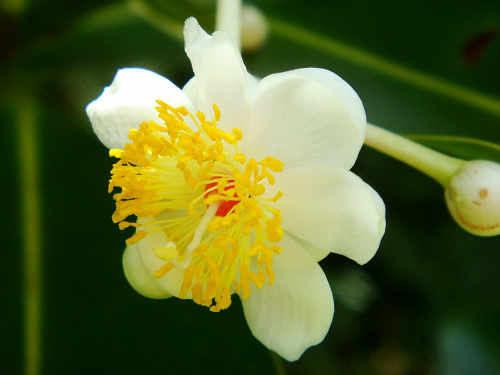Calophyllum inophyllum is a large tropical tree native to southeast Asia and East Africa. In English this tree is also often called Ballnut.
Because of its decorative leaves, fragrant flowers and spreading crown, it is best known as an ornamental plant. It is widely cultivated in all tropical regions of the world.
It is a low-branching and slow-growing tree with a broad and irregular crown. It usually reaches 8 to 20 metres (26 to 66 ft) in height. The flower is 25 millimetres (0.98 in) wide and occurs in racemose or paniculate inflorescences consisting of 4 to 15 flowers. Flowering can occur year-round, but usually two distinct flowering periods are observed, in late spring and in late autumn. The fruit (the ballnut) is a round, green drupe reaching 2 to 4 centimetres (0.79 to 1.6 in) in diameter and having a single large seed. When ripe, the fruit is wrinkled and its color varies from yellow to brownish-red.
In Chinese traditional medicine, ballnut is used for abrasions, acne, anal fissures, blisters, burns (boiling water, sun, x-rays), cuts, diabetic ulcers, dry skin, eczema, herpes sores, insect bites and stings, psoriasis, scars, sore throat, foot and body odor, and for pain from muscle, nerve, shingles, leprous neuritis (inflammation associated with leprosy), or rheumatological etiologies.
The phytochemistry of ballnut has been well established, and there are several laboratory and animal trials showing effectiveness of tamanu as an antibacterial, anticancer, anti-inflammatory, and antiviral agent. There is limited evidence from human clinical trials, however, about its safety or effectiveness.


